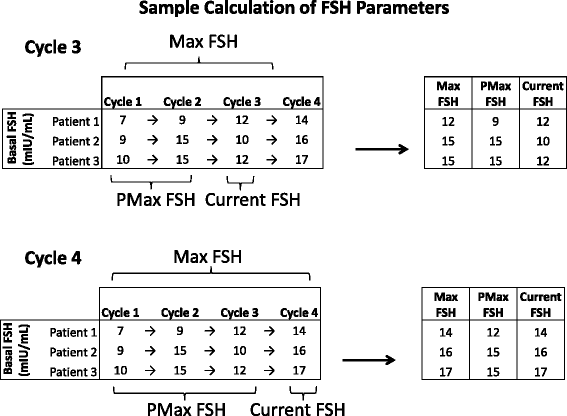
- Consider a set of hypothetical patients whose basal FSH measurements in cycles 1-4 are as shown. Current FSH denotes the basal FSH level at the beginning of the given cycle. Maximum (Max) FSH denotes the maximum of all basal FSH measurements up to and including the given cycle, including cancelled or non-IVF cycles. Previous maximum (PMax) FSH denotes the maximum of all basal FSH measurements prior to the cycle, including cancelled or non-IVF cycles
- We will first calculate these values for cycle 3. For patient 1, the current FSH is also the Max FSH (12 mIU/mL). Because the current (most recent) cycle FSH is never considered when calculating PMax, the PMax FSH for patient 1 is the maximum over all previous cycles (9 mIU/mL). For patients 2 and 3, the Max FSH was measured previously and is the same as the PMax FSH. Note that the FSH measurements from cycle 4 play no role in the calculation of FSH parameters for cycle 3
- Now consider the same calculations for cycle 4. For patient 1, the new Max FSH is 14 mIU/mL, while PMax FSH is 12 mIU/mL. Note that PMax FSH in the next cycle is the same as Max FSH in the previous cycle. For patients 2 and 3, Max FSH are now from the current cycle (16 and 17 mIU/mL, respectively) while PMax FSH remains 15 mIU/mL

